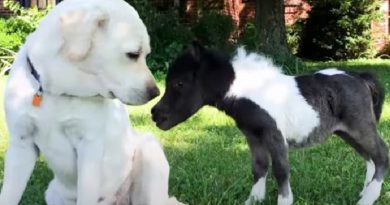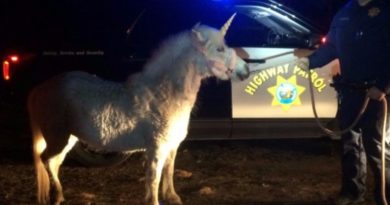Putin Visits Reserve For Wild Horses And Sets 6 Of Them Free! (VIDEO)
Putin visits reserve for wild horses and sets 6 of them free.
Russian President Vladimir Putin visited a natural reserve where scientists are running a project that is meant to reintroduce Przewalski’s horses to their native habitat.
Przewalski’s horses are the last surviving subspecies of wild horse.
First described scientifically in the late 19th century by Russian explorer N. M. Przewalski, for whom the horse is named. The horse once freely roamed the steppe along the Mongolia-China border.
Never again seen in the wild, Przewalski’s horses have since been kept and bred in captivity and have recently been reintroduced in Mongolia.
With a short, muscular body, Przewalski’s horses are smaller than most domesticated horses. They have a pale belly and beige to reddish-brown coat that is short during summer and thicker and longer in winter. Their muzzle is white, and they don an erect and dark mane that lines their large head and neck.
They stand about 12 to 14 hands tall at the shoulder, or about 48 to 56 inches (122 to 142 centimeters), and weigh about 440 to 750 pounds (200 to 340 kilograms).
The Russian president Vladimir Putin fed the horses and observed the wild animal in its natural habitat.
While extant in the wild, these horses ate grasses and other vegetation on the steppe, shrublands, and plains of western Mongolia and northern China. Herds observed at reintroduction sites appear to be affectionate. Females, or mares, and foals live in family groups with a dominant stallion, while younger males live in bachelor groups. Mares give birth to a single foal after an 11- to 12-month pregnancy.
Considered a wild subspecies because its ancestors were never domesticated, the extinction in the wild of the Przewalski’s horse was due primarily to interbreeding with other domesticated horses. About 1,500 exist today, a large number living in zoos, but many also making up herds that have been reintroduced at several sites in Mongolia.
While their greatest threats today include a loss of genetic diversity, their extinction in the wild was also brought on by hunting, loss of habitat, and loss of water sources to domestic animals.


